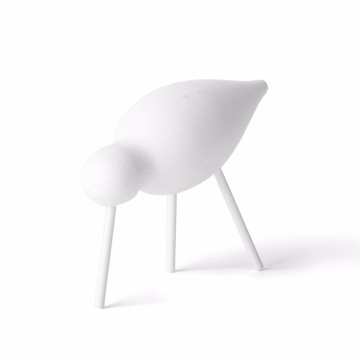The Art of Udon: A Culinary Journey Through Japan
Introduction to Udon: A Cultural Staple
Udon, a thick wheat noodle, is a quintessential element of Japanese cuisine, deeply embedded in the cultural fabric of Japan. Its origins can be traced back to the Tang Dynasty in China, where it was introduced as part of the culinary exchange along trade routes. It was during the Heian period that udon began to be embraced by Japanese society. Over time, this dish evolved, adapting to the unique tastes and agricultural practices of Japan, which molded its identity into what it is today.
The cultural significance of udon extends beyond mere sustenance, as it symbolizes comfort and hospitality within Japanese households. It is often served in various forms—hot or cold—depending on the season, and is typically enjoyed with a variety of toppings and broths that reflect regional specialties. In this sense, udon is not only a meal; it contributes to communal and familial bonding. At home, parents prepare udon for their children, embedding the dish with personal and familial memories that are passed down through generations.
Types of Udon: Variations Across Regions
Udon is a beloved dish that reflects the culinary diversity of Japan, with regional variations that exemplify local ingredients and traditions. One of the most prominent varieties is Sanuki udon, originating from Kagawa Prefecture. Known for its firm and chewy texture, Sanuki udon is made using specific milling methods that create a distinct bite. This type of udon is often served in a simple soy sauce-based broth, accompanied by green onions and tempura, allowing the flavor of the noodles to shine through.
Another notable type is Nishin udon, a specialty from Kyoto. This dish is characterized by the addition of herring, which is typically simmered in a sweet and savory soy-based sauce. The fish not only enhances the flavor profile but also reflects Kyoto’s historical significance as a port city, where seafood was a staple. Nishin udon is often enjoyed during the colder months, providing warmth and nourishment.
In the northern regions, such as Hokkaido, the udon variations often incorporate local ingredients, like seafood from the surrounding waters. One such example is Yubari udon, which features a creamy broth made from miso and seafood, bringing together the flavors of the region. The use of seasonal vegetables also plays a crucial role in this variation, demonstrating how climate influences regional cooking styles.
Additionally, Tempura udon is popular across many prefectures, allowing chefs to showcase their creativity with seasonal ingredients. Often served with fried vegetables or shrimp, this dish epitomizes the balance between texture and flavor found in Japanese cuisine. Each local style of udon not only represents the ingredients available but also reflects the culture and history of the area, making udon a rich topic for exploration in Japan's culinary landscape.
The Art of Making Udon: Techniques and Ingredients
The preparation of udon noodles is a meticulous process that requires both skill and patience. The key ingredients for crafting high-quality udon include flour, water, and salt. Culinary Traditionally, a specific type of high-protein wheat flour is preferred, as it contributes to the ideal texture and elasticity of the noodles. This flour, often called 'udon flour,' is combined with water and a pinch of salt to create the dough. The proportions of these ingredients can significantly affect the final product, making the quality of the flour essential.
Once the ingredients are combined, the next step involves kneading the dough. This process is not merely about mixing; it requires a careful balance of firmness and pliability. Kneading should be continued until the dough achieves a smooth, elastic consistency. After kneading, the dough should be allowed to rest for at least 30 minutes. Resting helps the gluten to relax, paving the way for easier rolling and cutting.
After resting, the dough needs to be rolled out into an even thickness. This can be done using a rolling pin or a pasta machine for consistency. Once rolled, the dough is cut into strands of the desired width. For culinary traditional udon, the noodles are typically thicker than other types of noodles, allowing them to hold sauces and broths effectively.
Cooking udon is another crucial step in the process. Boiling the noodles in salted water until they float to the top is the standard method, which usually takes about 8 to 12 minutes. It’s important to note that the cooking time may vary based on the thickness of the noodles. After cooking, the udon should be rinsed under cold water to halt the cooking process and enhance texture.
To master the art of udon preparation, aspiring cooks should consider experimenting with different flour types and cooking times. Each adjustment can yield unique flavors and textures, ultimately refining one's technique and enhancing the overall udon culinary experience.
Enjoying Udon: Pairings and Serving Suggestions
Udon, a thick and chewy Japanese noodle, offers a delightful canvas for various toppings and sides that enhance its taste and texture. One of the most classic ways to enjoy udon is with a generous serving of tempura. The crispy batter complements the soft noodles beautifully, adding an irresistible crunch. Shrimp, sweet potatoes, and seasonal vegetables are popular choices for tempura, offering a variety of flavors that harmonize with the udon.
Another essential accompaniment is green onions, which provide a fresh and slightly sharp contrast that elevates the overall dish. Thinly sliced scallions can be sprinkled atop hot udon or mixed into dipping sauces. Furthermore, sauces such as soy sauce, ponzu, and sesame can be used, each bringing its signature flavor profile that can elevate your udon culinary experience. For those who enjoy a bit of heat, a touch of chili oil or pepper can add a great kick, allowing for the customization of flavors to suit personal preferences.
Udon can be served in various styles: hot, cold, or in savory soups. A hot bowl of udon in a rich broth serves as a comforting meal, especially during colder months, while cold udon, often enjoyed during summer, provides a refreshing alternative. The latter is typically served with a dipping sauce on the side, encouraging diners to savor each bite at their own pace. For a unique culinary experience, consider customizing your udon by adding proteins such as chicken, tofu, or even an egg, allowing for a more personalized dish.
When enjoying udon, whether at home or at a Japanese restaurant, the culinary adventure is endless. Exploring different toppings, sauces, and serving styles can lead to discovering new favorites, all while appreciating the versatility that udon has to offer. From simple preparations to elaborate presentations, the enjoyment of udon can cater to both casual meals and gourmet culinary experiences.




